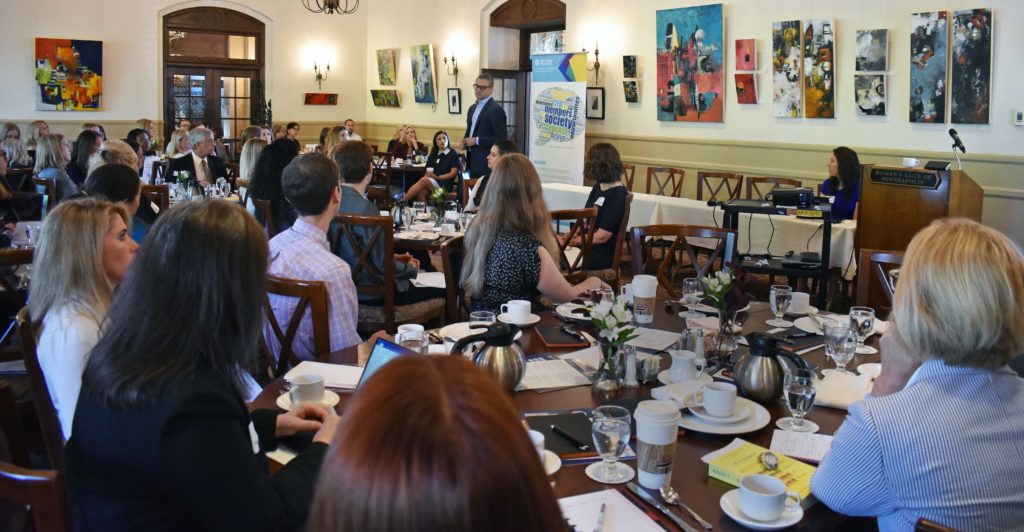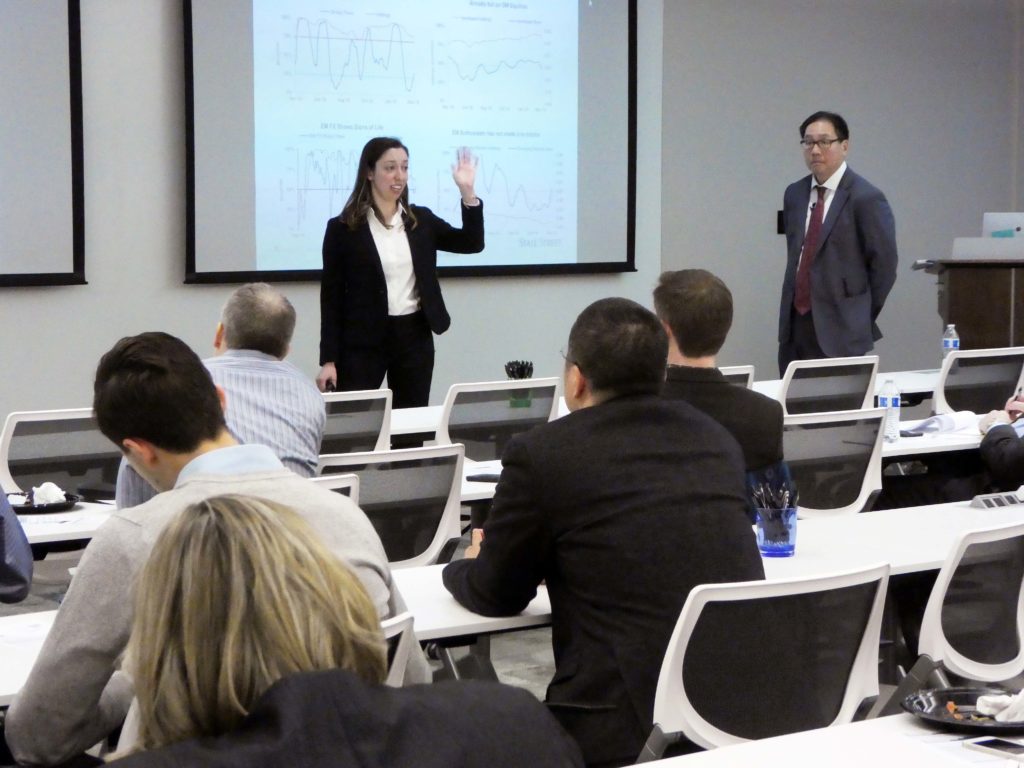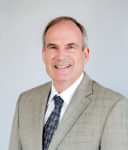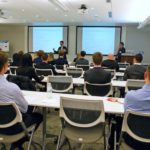By: Hilary Wiek, CFA, CAIA, Society Volunteer

In my last blog post, I provided an introduction to the excellent program CFA Society Minnesota had in June on Diversity and Inclusion. In this post, I’ll outline some of the key topic areas from the event, drawing upon talks by BlackRock’s Jonathan McBride, Wells Fargo’s Leyla Kassem, CFA, discussions at the tables and then shared with the room, and two panel discussions – one with women working in their organizations on diversity and inclusion issues and the other with women discussing their paths to the leadership positions they now hold. A third post will provide information about where one can read more about or do more to advance this important topic. So here are some thoughts on the topics discussed on June 5:
1.) To have productive conversations about diversity and inclusion:
Assume positive intent. Our speakers challenged us to have an important and uncomfortable conversation. You probably have noticed that you will allow some people to tease you quite mercilessly and you take no offense. Or if you do take offense, you find yourself excusing them because you know that they meant nothing by it. Yet if a stranger made the same joke, your reaction might be quite different. This is one indicator of unconscious biases that we all harbor.
When hoping to have a constructive conversation on the topic of diversity and inclusion, it is good to do what you can to be aware of your biases, realize that the other people have their own biases, and make an effort to act with the assumption that you both have positive intent, regardless of what comes out of your mouths. By doing this, hopefully everyone will give the benefit of the doubt when it comes to word choice and will truly hear the perspectives being expressed.
It is important to note that unconscious bias training will not eliminate biases. The hope is to mitigate biases and have people learn to hire or act around the biases.
2.) Hiring a diverse workforce in the investment industry:
One major problem to getting to a more diverse workforce: pipeline. Many people at the event mentioned that when trying to hire people for their open positions, the applicants were overwhelmingly white males. One leader had assumed that her company was just doing a poor job recruiting, that the diverse talent was out there, but she came to see that many women and people of color opt out of the business because of things they have heard about the lifestyle and culture or they do not even realize what investment roles entail when they are in the process of designing their educational path. The next blog post will list a few real-world programs working to solve the problem of attracting diverse individuals to the industry.
It was noted that the accounting world has been successful in recent decades in identifying potential talent when there is still time to get the proper training. The investment world needs to get to diverse individuals early on and share with them what skills, attitudes, and attributes are needed to be successful so that those who are attracted by those things will know what they need to do to be qualified for investment roles when the time comes.
While schooling is important to get your foot in the door, learning the investment business is very much done through apprenticeship. It is important that young diverse talent has access to the mentors who will guide them through the early years of their career and give them the opportunities to broaden their skill sets at appropriate intervals. Companies can create programs to ensure that unconscious bias does not lead to only a certain type of person being selected for such opportunities.
What’s the goal? 50/50 male/female? Numbers are arbitrary and it could take years, even decades, to get to that level at the current pace. But getting to inclusive is more immediately achievable. The goal is to create an environment where all cultures and backgrounds feel heard and want to stick around. It will be harder to get to 50/50 if your diverse staff keep leaving because they don’t feel welcome.
3.) To get the most benefit out of having a diverse workforce:
The problem: retention. Even if you are able to make diverse hires, you will not garner the benefits of diversity if you are not able to make everyone feel heard (the “inclusion” part of diversity and inclusion), as the struggle to fit into an unnatural mold will be exhausting for many. While people are struggling to conform, they will not feel comfortable providing their best ideas for fear of dismissive attitudes from colleagues. Eventually people will depart, leaving your team back at square one in trying to restock the talent pool. Many firms will see this as a learning moment and assume that people who bring in diverse perspectives are a bad fit and they decide to hire people more likely to stick around – which often means hiring people who look or think or act as the current employees already do.
The solution is to focus the company’s efforts on inclusion. This means getting to know everyone, learning to play to each person’s strengths and listening to their points of view. This may be challenging to some, but it has been proven (see the next blog for research citations) that the more difficult and uncomfortable investment discussions that come from heterogenous teams result in better team decisions. As one speaker said, unanimity feels like a good thing, but hard things should be hard.
One way to work on the inclusion problem is to get to know each other. We have been conditioned to not ask about others who are different at work, to “keep it professional”, but getting to know the people on your team allows for the evident differences to fade and the commonalities to shine through. It also allows people to open their minds to the differing perspectives and realize the value they bring to a conversation. Diverse teams must find ways to bring the diverse points of view out, or the effort will have been wasted.
In a crisis, all of the differences and negative intent assumptions matter less and people come together to get something done. And afterwards the team is stronger for it. As a company, you have to figure out how to get your staff there without a crisis. Managers who are willing to show vulnerability to employees by admitting that this is hard and they need help will get their staff to care. Be fallible. People like the underdog.
I typed pages and pages of notes from this event and there were other really great points made during the morning, but I have attempted to faithfully provide the major areas of discussion. Please feel free to comment on the CFA site, particularly with substantive efforts you have been involved with or are trying that are intended to make a difference in the diversity profile of our industry.








 On November 16, a group of students and their professor, along with other business professionals had a chance to learn from Josh Howard, CFA and Scott Opsal, CFA. Over the course of lunch, our speakers shared with us their backgrounds as Directors of Research, daily tasks, and important tips to become investment professionals.
On November 16, a group of students and their professor, along with other business professionals had a chance to learn from Josh Howard, CFA and Scott Opsal, CFA. Over the course of lunch, our speakers shared with us their backgrounds as Directors of Research, daily tasks, and important tips to become investment professionals.